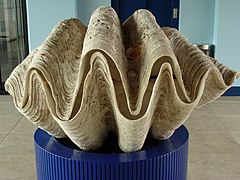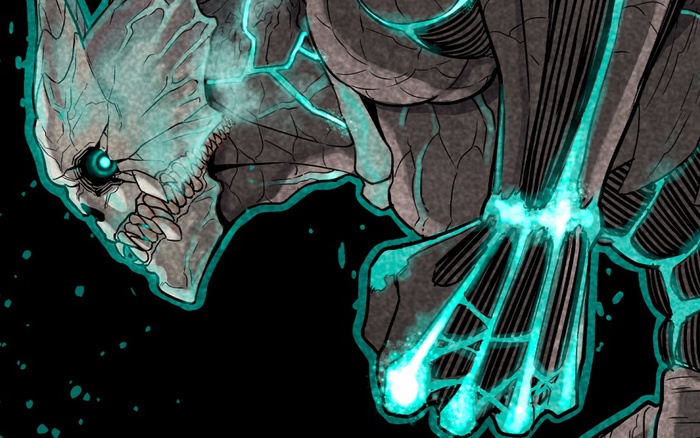Sò tai tượng
| Sò tai tượng | |
|---|---|

| |
| T. gigas, Michaelmas Cay Rạn san hô Great Barrier, Queensland, Úc | |
| Phân loại khoa học | |
| Vực: | Eukaryota |
| Giới: | Animalia |
| Ngành: | Mollusca |
| Lớp: | Bivalvia |
| Phân lớp: | Heterodonta |
| Bộ: | Cardiida |
| Họ: | Cardiidae |
| Chi: | Tridacna |
| Loài: | T. gigas
|
| Danh pháp hai phần | |
| Tridacna gigas (Linnaeus, 1758) | |
| Các đồng nghĩa[3] | |
|
Chama gigantea Perry, 1811 | |
Sò tai tượng hay sò tượng (danh pháp khoa học: Tridacna gigas, còn được gọi là pā'ua ở quần đảo Cook), là loài thân mềm hai mảnh vỏ lớn nhất. T. gigas là một trong những loài sò đang bị đe dọa nghiêm trọng nhất. Chúng là một trong số các loài sò lớn có nguồn gốc từ các rạn san hô nông của Nam Thái Bình Dương và Ấn Độ Dương, có thể nặng hơn 200 kg (440 lb), chiều ngang do được 120 cm (47 in), và có tuổi thọ trung bình trong tự nhiên 100 năm trở lên.[4] Chúng cũng được tìm thấy ngoài khơi bờ biển Philippines, nơi chúng được gọi là taklobo, và tại Biển Đông ở các rạn san hô của Sabah (Đông Malaysia).[5]
Hình ảnh
[sửa | sửa mã nguồn]-
Empty giant clam shell in the French National Museum of Natural History
-
Empty shell from the Aquarium Finisterrae in Spain
-
Green and blue giant clam from East Timor
-
Largest of all clam species
-
A giant clam from East Timor of over one meter in length.
Chú thích
[sửa | sửa mã nguồn]- ^ Neo, M.L.; Li, R. (2024). “Tridacna gigas”. Sách đỏ IUCN về các loài bị đe dọa. 2024: e.T22137A119167161. Truy cập ngày 13 tháng 12 năm 2024.
- ^ “Appendices | CITES”. cites.org. Lưu trữ bản gốc ngày 3 tháng 2 năm 2007. Truy cập ngày 14 tháng 1 năm 2022.
- ^ Bouchet, P. (2013). “Tridacna gigas (Linnaeus, 1758)”. Cơ sở dữ liệu sinh vật biển.
- ^ “Giant Clam: Tridacna gigas”. National Geographic Society. Bản gốc lưu trữ ngày 21 tháng 6 năm 2012. Truy cập ngày 2 tháng 6 năm 2007.
- ^ Knop, p. 10.
Tham khảo
[sửa | sửa mã nguồn]Wikimedia Commons có thêm hình ảnh và phương tiện truyền tải về Sò tai tượng.
- Beckvar, N. (1981). “Cultivation, spawning, and growth of the giant clams Tridacna gigas, T. Derasa, and T. Squamosa in Palau, Caroline Islands”. Aquaculture. 24: 21–30. doi:10.1016/0044-8486(81)90040-5.
- Braley, Richard D. (1984). “Reproduction in the giant clams Tridacna gigas and T. Derasa in situ on the north-central Great Barrier Reef, Australia, and Papua New Guinea”. Coral Reefs. 3 (4): 221–227. Bibcode:1984CorRe...3..221B. doi:10.1007/BF00288258. S2CID 39673803.
- Dame, Richard F. (1996) Ecology of marine bivalves an ecosystem approach. Boca Raton: CRC. p. 51. ISBN 1-4398-3909-3.
- Gosling, Elizabeth (2003). Bivalve Molluscs Biology, Ecology and Culture. Grand Rapids: Blackwell Limited. p. 23. ISBN 978-0-85238-234-9
- Wilkens, L. A. (1986). “The visual system of the giant clam Tridacna: behavioral adaptations”. Biological Bulletin. 170 (3): 393–408. doi:10.2307/1541850. JSTOR 1541850.
- Land M.F. (2002). “The spatial resolution of the pinhole eyes of giant clams”. Proc. R. Soc. Lond. B. 270 (1511): 185–188. doi:10.1098/rspb.2002.2222. PMC 1691229. PMID 12590758.
- Jeffrey, S. W.; F. T. Haxo (1968). “Photosynthetic Pigments of Symbiotic Dinoflagellates (Zooxanthellae) from Corals and Clams”. Biological Bulletin. 135 (1): 149–65. doi:10.2307/1539622. JSTOR 1539622. Bản gốc lưu trữ ngày 4 tháng 6 năm 2023. Truy cập ngày 4 tháng 6 năm 2023.
- Klumpp, D.W.; Bayne, B.L. & Hawkins, A.J.S. (1992). “Nutrition of the giant clam, Tridacna gigas (L). 1. Contribution of filter feeding and photosynthesis to respiration and growth”. Journal of Experimental Marine Biology and Ecology. 155: 105. doi:10.1016/0022-0981(92)90030-E.
- Munro, John L. (1993) "Giant Clams." Nearshore marine resources of the South Pacific information for fisheries development and management. Suva [Fiji]: Institute of Pacific Studies, Forum Fisheries Agency, International Centre for Ocean Development. p. 99
- Norton, J. H.; M. A. Shepherd; H. M. Long & W. K. Fitt (1992). “The Zooxanthellal Tubular System in the Giant Clam”. The Biological Bulletin. 183 (3): 503–506. doi:10.2307/1542028. JSTOR 1542028. PMID 29300506.
- Knop, Daniel. Giant Сlams: A Comprehensive Guide to the Identification and Care of Tridacnid Clams. Ettlingen: Dähne Verlag, 1996, ISBN 3-921684-23-4
- Schwartzmann C, G Durrieu, M Sow, P Ciret, CE. Lazareth and J-C Massabuau. (2011) In situ giant clam growth rate behavior in relation to temperature: a one-year coupled study of high-frequency non-invasive valvometry and sclerochronology. Limnol. Oceanogr. 56(5): 1940–1951 (Open access)
- Yonge, C.M. 1936. Mode of life, feeding, digestion and symbiosis with zooxanthellae in the Tridacnidae, Sci. Rep. Gr. Barrier Reef Exped. Br. Mus., 1, 283–321
- Wells (1996). Tridacna gigas. Sách đỏ 2006. IUCN 2006. Truy cập ngày 6 tháng 5 năm 2006. Listed as Vulnerable (VU A2cd v2.3)
- ARKive – images and movies of the giant clam (Tridacna gigas) Lưu trữ 2004-05-29 tại Wayback Machine
- Tridacna gigas entry on Animal Diversity Web
- Giant clam entry on the IUCN Red List of threatened species Lưu trữ 2006-04-28 tại Wayback Machine
- Giant clam conservation research project Lưu trữ 2005-02-09 tại Wayback Machine at Universiti sains Maylaysia
- Giant Clams of the Great Barrier Reef
- Microdocs Lưu trữ 2012-10-24 tại Wayback Machine: The solar powered clam Lưu trữ 2011-07-30 tại Wayback Machine & Growing a giant clam Lưu trữ 2013-11-09 tại Wayback Machine
- MolluSCAN eye project Lưu trữ 13 tháng 11 năm 2016 tại Wayback Machine, a website dedicated to the in situ study of bivalve mollusks around the world
- Hình ảnh của Sò tai tượng trên Sealife Collection.
Chúng tôi bán
 GIẢM
30%
GIẢM
30%
35.000 ₫
50.000 ₫
 GIẢM
33%
GIẢM
33%
1.000 ₫
1.500 ₫
 GIẢM
49%
GIẢM
49%
35.000 ₫
69.000 ₫
 GIẢM
33%
GIẢM
33%
13.400 ₫
20.000 ₫
 GIẢM
25%
GIẢM
25%
130.000 ₫
174.000 ₫
 GIẢM
16%
GIẢM
16%
185.000 ₫
220.000 ₫












